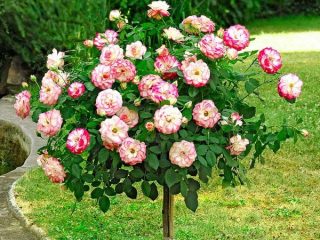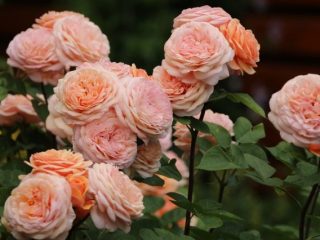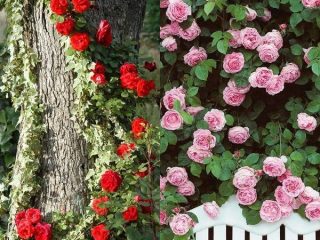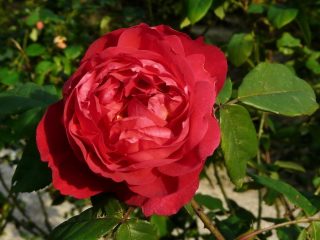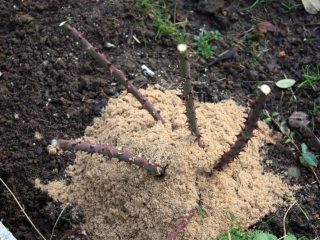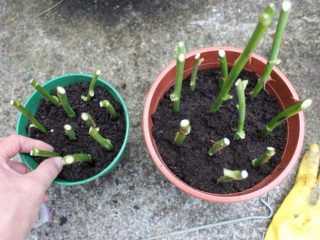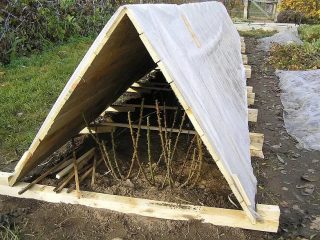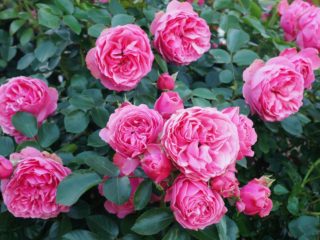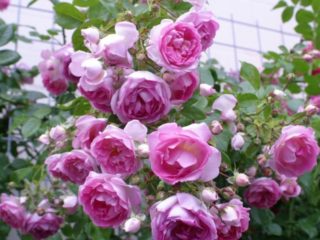Content
- 1 History of selection
- 2 Description of the Explorer rose variety and characteristics
- 2.1 Varieties of Explorer series roses
- 2.1.1 Champlain
- 2.1.2 Lambert Closse
- 2.1.3 Louis Jolliet (Lewis Joliet)
- 2.1.4 Royal Edward
- 2.1.5 Simon Fraser
- 2.1.6 Captain Samuel Holland (Captain Samuel Holland)
- 2.1.7 Henry Kelsey (Henry Kilsey)
- 2.1.8 John Cabot (John Cabot)
- 2.1.9 William Baffin
- 2.1.10 Henry Hudson (Henry Hudson)
- 2.1.11 Martin Frobisher (Martin Frobisher)
- 2.1 Varieties of Explorer series roses
- 3 Advantages and disadvantages of the variety
- 4 Reproduction methods
- 5 Growing and care
- 6 Pests and diseases
- 7 Application in landscape design
- 8 Conclusion
- 9 Reviews with photos about the Explorer rose
Rose Explorer is not one flower, but a whole series of varieties developed by different breeders. A wide variety of crops allows you to choose the best option for your garden or plot.
History of selection
The entire series is the work of Canadian researchers. Initially, roses were created in Ottawa, later research was carried out in Quebec. Currently, work related to this series has been discontinued. Each variety is named after its creator.
Most Explorer varieties are complex hybrids. Many varieties are based on the Cordes rose. The main characteristics of the series are good frost resistance and abundant flowering.
Description of the Explorer rose variety and characteristics
The varieties of the series are characterized by abundant flowering. The plant is frost-resistant, able to tolerate cold temperatures down to -40 °C. If frost damages the shoots of the bush, the rose quickly recovers, although it blooms less profusely this year.
A notable quality of the Explorer series roses is their low maintenance requirements. The culture grows well in gardens and parks, without fear of drought or rainy periods.
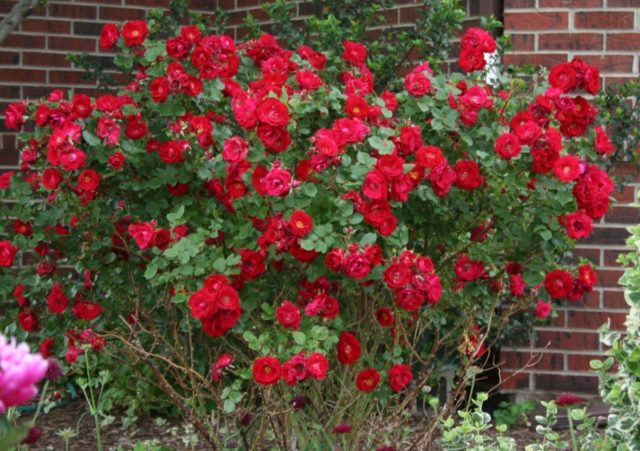
The flower is undemanding to the composition of the soil, but pleases with abundant flowering only with regular fertilizing
Varieties of Explorer series roses
The entire series is divided into 3 groups:
- park bush - Champlain, Lambert Klosse, Lewis Joliet, Royal Edward, Simon Fraser;
- Rogusa - Henry Hudson, Martin Frobisher.
- Mountaineers - Captain Samuel Holland, Henry Kilsey, William Bufin, John Cabot.
When choosing a variety for a site, you should study the varietal characteristics of the flower in order to create beautiful compositions when designing the landscape.
Champlain
The variety was bred in 1973. The Explorer rose grows from 70 cm to 1 m in height. The shoots are strong and branched. The buds are velvety to the touch, red in color, with a faint aroma. They reach 6-7 cm in diameter and consist of 30 petals.
The crop has a strong immune system, it does not suffer from powdery mildew and successfully resists black spot. Reproduction for the Champlain variety is by cuttings.
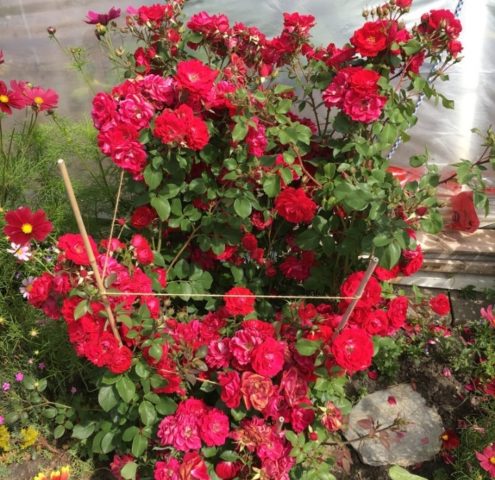
The bush can withstand frosts down to -40 °C, but needs regular spring pruning of dead shoots
Lambert Closse
The variety was obtained in 1983. Parental qualities were taken from roses Arthur Bell and John Davis. It reaches a height of 85 cm. It grows in width up to 80 cm.
The color of the variety is interesting: when closed, the buds are dark pink, but as they open, they change tone to pink. The open flowers are light pink. This feature allows you to use Explorer roses to create a bouquet. Judging by the photo, the flowers look impressive, reaching a diameter of 8 cm, consisting of 53 petals. The buds can be either single or in clusters of 3 pieces.
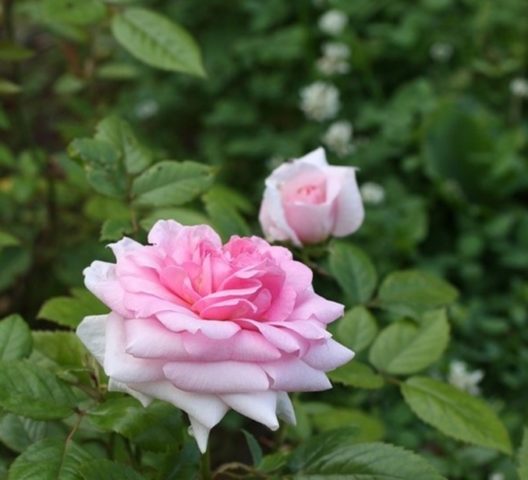
Flowering period Lambert Klosse - from mid-summer to September
Louis Jolliet (Lewis Joliet)
The species was released in 1984. This is a creeping variety, the branches of which reach a length of 1.2 m.
Explorer's buds are pink, presented on the bush in the form of brushes of 3-10 pieces. The flower is 7 cm in diameter, consists of 38 petals, exudes a pleasant, spicy aroma.
Lewis Joliet is propagated by cuttings and is not afraid of powdery mildew and black spot.
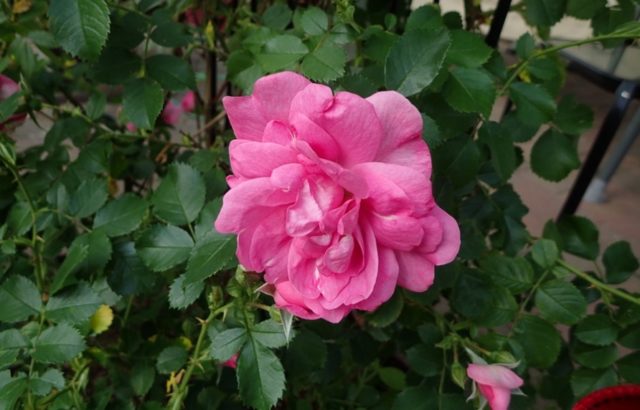
With sufficient lighting and warm weather, the buds can be admired from mid-summer to September
Royal Edward
The variety was bred in 1985. The height of the bush is up to 45 cm, its width grows to 55 cm. The buds of the hybrid tea rose Explorer are dark pink, but they fade in the sun, so they become pale pink. The diameter of the flowers reaches 5.5 cm, each of them consists of 18 petals. On a bush, the buds can be located either singly or in a cluster of 2 to 7 pieces.
The blooming period of the Explorer rose is from June to September. In spring, the bush needs pruning.
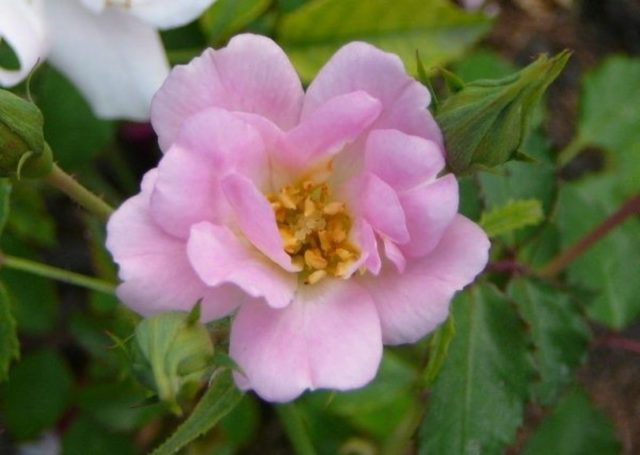
The miniature rose is a ground cover, so it is recommended to plant it when creating alpine slides and designing small gardens
Simon Fraser
Rose was bred in 1985. The height of the bush is 0.6 m. The buds are 5 cm in diameter, pink in color, united in inflorescences of 1-4 pieces. Most of the flowers in the Explorer series roses are semi-double with 22 petals, but simple buds with 5 petals also appear.
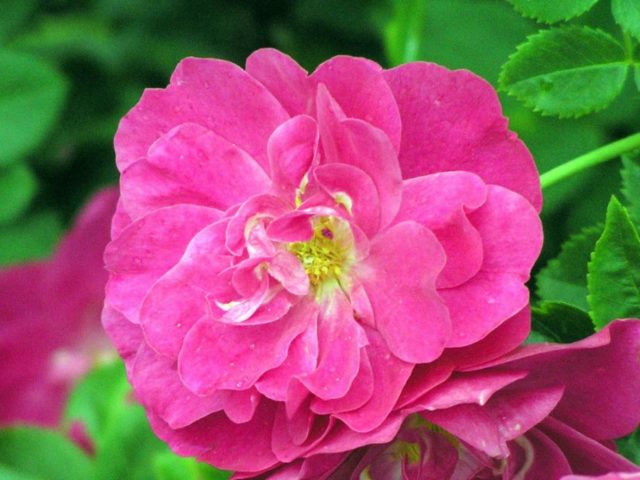
Flowering lasts from June to September
Captain Samuel Holland (Captain Samuel Holland)
The variety was bred in 1981. Creeping, climbing shrub. Shoots can reach 1.8 m in length.
The flowers are red in color, up to 7 cm in diameter. Each flower consists of 23 petals. The buds are combined into inflorescences, each of which contains 1-10 pieces.
A variety with a strong immune system and is not susceptible to black spot and powdery mildew.
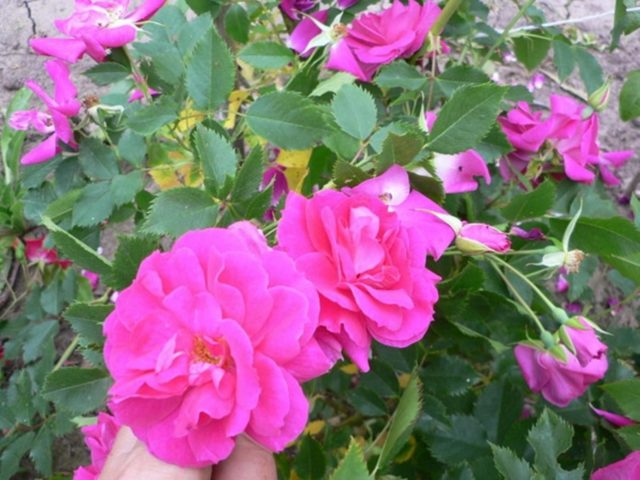
A characteristic feature of the Explorer rose: if the weather is sunny, the bush can bloom again
Henry Kelsey (Henry Kilsey)
The variety was developed in 1972. The bush is climbing; the shoots of the Explorer rose can reach 2-2.5 m in length.
The Red Queen of Roses has beautiful bright buds with a spicy aroma. The diameter of each varies from 6 to 8 cm. There are a total of 25 petals in the flower. The plant forms 9-18 flowers on one cluster of bushes.
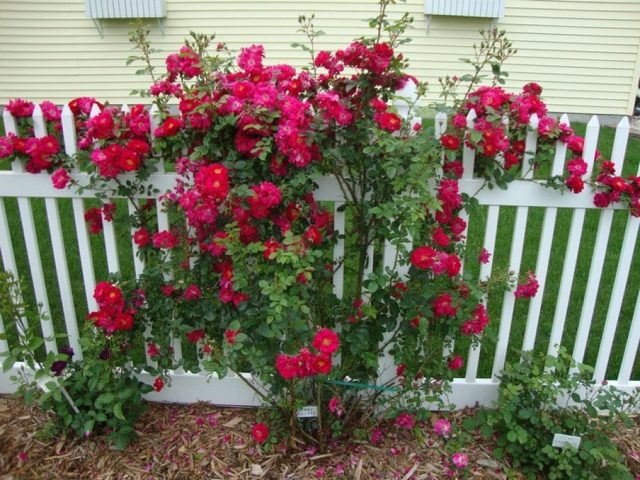
The Henry Kilsey rose blooms throughout the summer season and is rarely affected by disease due to its strong immune system.
John Cabot (John Cabot)
John Cabot was bred in 1969. The rose is climbing, with strong and flexible branches, whose length varies from 2.5 to 3 m. The buds are bright crimson in color, 7 cm in diameter, and consist of 40 petals.
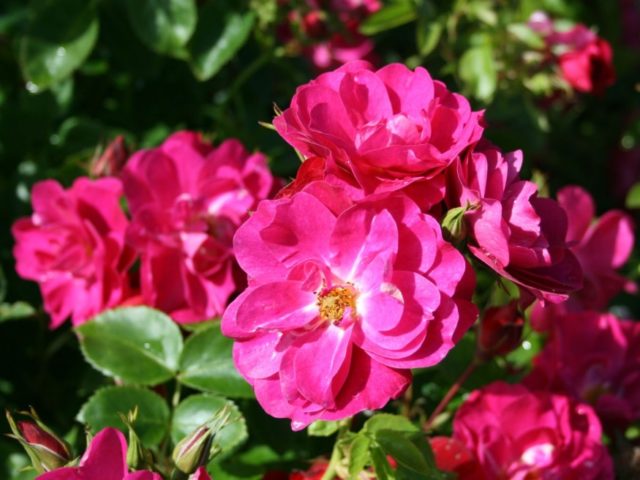
The buds form from June to July, but under favorable weather conditions they bloom again in August and September
William Baffin
The variety was bred in 1975.It is the result of open pollination of a seedling whose roots are Rosa kordesii Hort., Red Dawn and Suzanne. The bush does not need pruning; its shoots reach a length of 2.5-3 m.
Its flowers are red in color, with a pleasant light aroma. Each bud has 20 petals. The diameter of the bud is 6-7 cm. Each inflorescence contains up to 30 flowers.
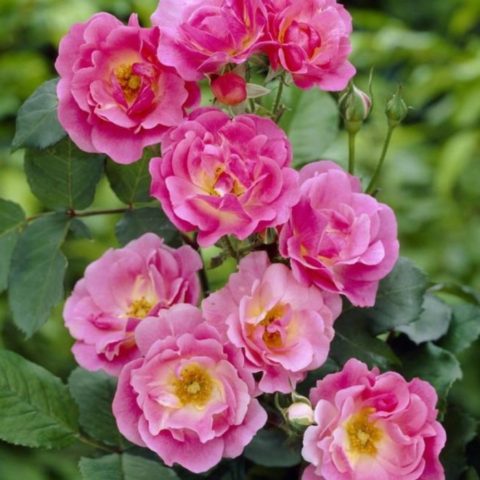
Rose Explorer tolerates frosts well down to -40-45 °C
Henry Hudson (Henry Hudson)
The rose was obtained in 1966 as a result of open pollination of the Schneezwerg variety.
The height is 0.5-0.7 m, it grows up to 1 m in width. The flowers of the Explorer rose are white, with a pink tint, consisting of 20 petals, reminiscent of apple buds. They also have a pleasant aroma.
It blooms several times per season, weather conditions permitting.
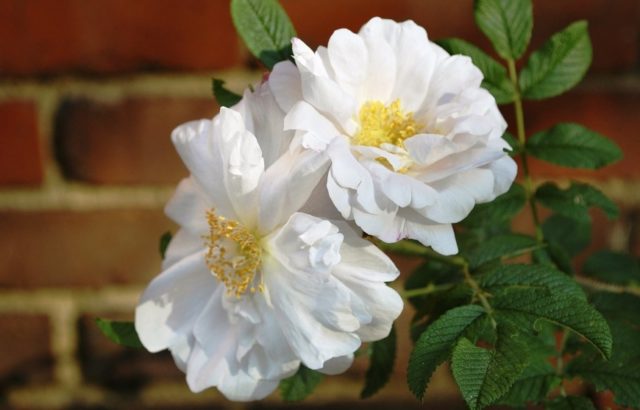
Rose Explorer is intended for cultivation in zone 2; in harsh climates, damage to the shoots and roots of the plant is possible
Martin Frobisher (Martin Frobisher)
This is another result of the open pollination of the Schneezwerg rose. The variety was developed in 1962.
The height of the bush is from 1.5 to 2 m. It can reach 1.5 m in diameter. The flowers of the Explorer rose are soft pink, with a pronounced aroma. Each bud is 5-6 cm in diameter, assembled from 40 petals.
You can appreciate the beauty of photos taken against the backdrop of the Explorer rose throughout the season; from June to September, the flowers fade, and new ones bloom in their place, if weather conditions permit.
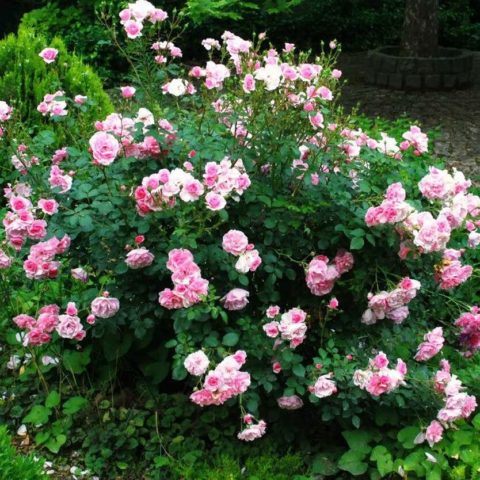
The variety is not afraid of powdery rose, but it can be affected by black spot
Advantages and disadvantages of the variety
The advantages of the variety include:
- winter hardiness;
- attractive appearance;
- variety of bud colors;
- strong immune system;
- resistance to periods of rain and drought;
- abundant and long-lasting flowering.
The disadvantages of the variety include inaccuracies in the description: despite the promises of manufacturers, some varieties of Explorer roses can freeze in cold regions. If the bush has been damaged by frost, then part of its energy will be spent on restoration, so flowering during the season will not be abundant.
Reproduction methods
The main method used for propagating Explorer roses is cuttings.
To do this, in July you need to cut branches of 25-30 cm each. You need to use young but fully formed shoots.
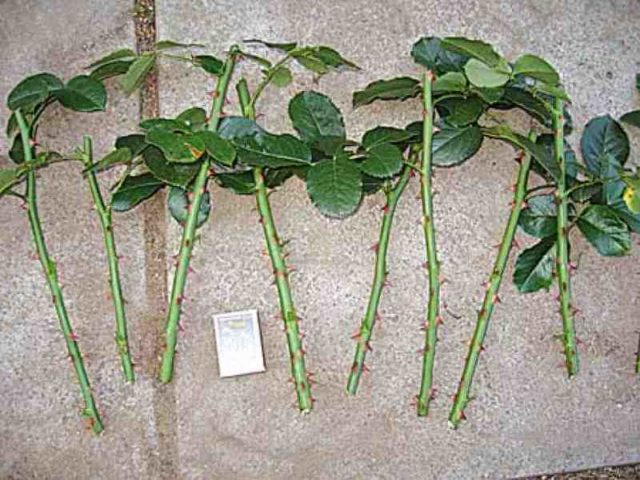
All leaf plates, except the top ones, need to be cut off and the blanks placed in a root formation stimulator solution
Plant the cuttings cut side down in containers with soil, cover with a plastic bottle, and wait until root formation begins.
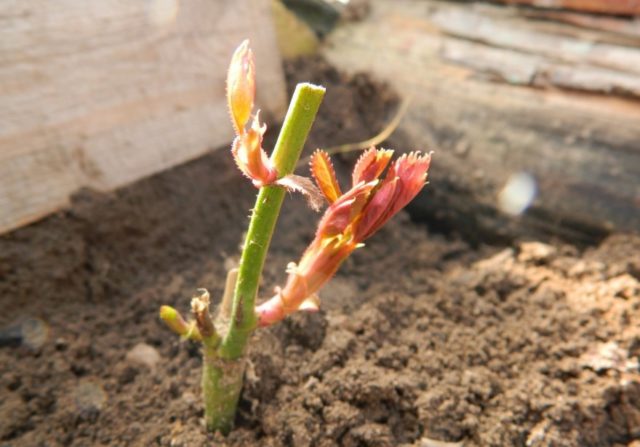
The cuttings are ready to be transplanted into open ground when new leaves and buds appear and the seedling begins to grow
It is possible to divide the bush in two, but Explorer roses do not tolerate transplantation to a new place.
Growing and care
Explorer roses grow beautifully in any corner of the garden, but the most abundant flowering can be achieved if you choose the right place for them. The flower prefers illuminated or lightly shaded areas.
The soil must be fertile, slightly acidic or neutral, and well permeable to water.
The landing algorithm is simple:
- Prepare a hole to suit the size of the bush, leave a distance of 35 cm between seedlings if the variety is short, and 1 m for climbing tall representatives of Explorer roses.
- Place gravel or sand at the bottom of the hole, fill 2/3 of the hole with a mixture of humus, peat and wood ash.
- Transfer the seedling treated with a growth stimulator to a hole, cover it with soil, deepening the grafting site by 5-10 cm.
- Mulch the rose with sawdust.
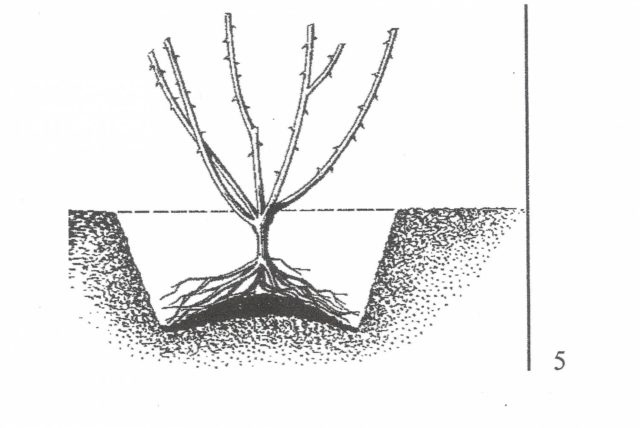
The bush may not take root if the grafting site is not deepened; it is from here that a strong root system should begin to form
Caring for Explorer roses:
- Watering. The plant should be moistened at the root throughout the season so that the soil is slightly moist; the last procedure is carried out at the beginning of September.
- Regular loosening and mulching of the tree trunk circle.
- Pruning is carried out annually in the spring; broken, damaged branches must be removed.
- Fertilizing is carried out annually, in the spring 20-30 g of urea are added to the soil, and in mid-summer 30 g of superphosphate and 20 g of potassium magnesium.
And although Explorer roses do not require shelter, many gardeners recommend protecting the bushes from frost.
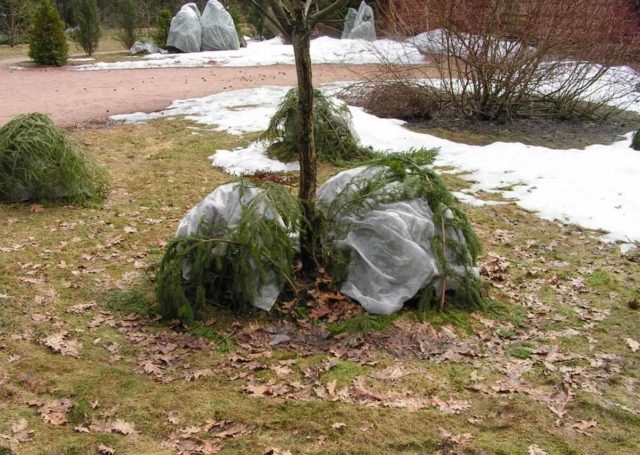
Young seedlings especially need protection; just wrap the bush with spruce branches or cloth
Pests and diseases
Canadian roses are characterized by a strong immune system; they are not afraid of powdery mildew or rot. If mold or white plaque appears on the plant, then these are sure signs that the crop is severely weakened.
As a preventive measure, it is enough to trim dead and damaged branches and remove fallen leaves. In spring and autumn, Explorer rose bushes should be treated with Quadris or Acrobat fungicides.
Application in landscape design
Most often, the Pink Explorer rose can be found in parks. But even in private areas, the flower can be used to decorate the garden. It is self-sufficient, so they prefer to plant evergreen shrubs to accompany it, which will highlight the beauty of the buds in the background.
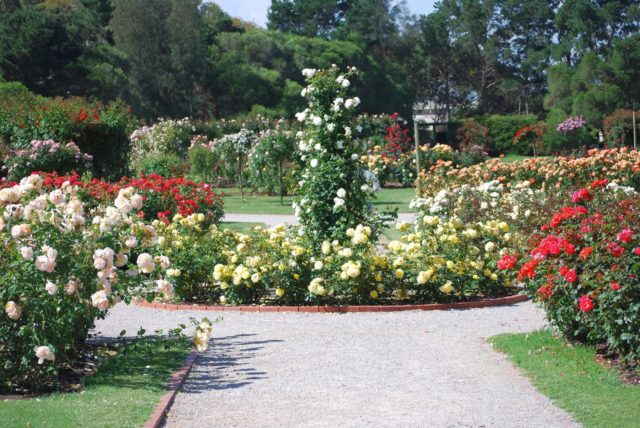
There should be at least 1 m between the bushes, with climbing tall Explorer roses placed behind low-growing species

Flowers planted along the walls of houses and fences look very organic and beautiful.
With the help of climbing roses you can create beautiful arches, entwine columns or other buildings with them.
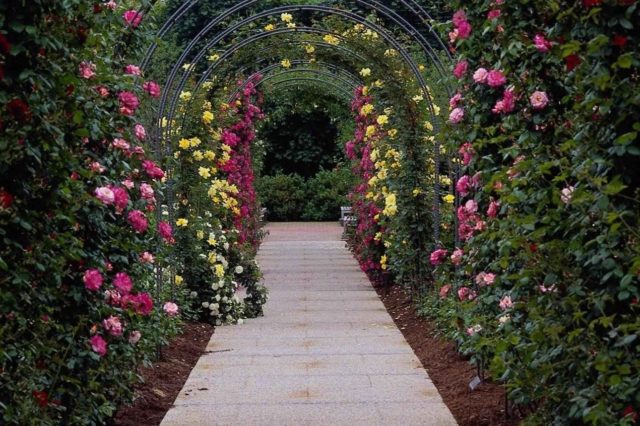
It is important not to neglect pruning, give the plant the necessary shape using fastenings and supporting devices
Gardeners prefer to plant low-growing varieties in flower beds or along garden paths.
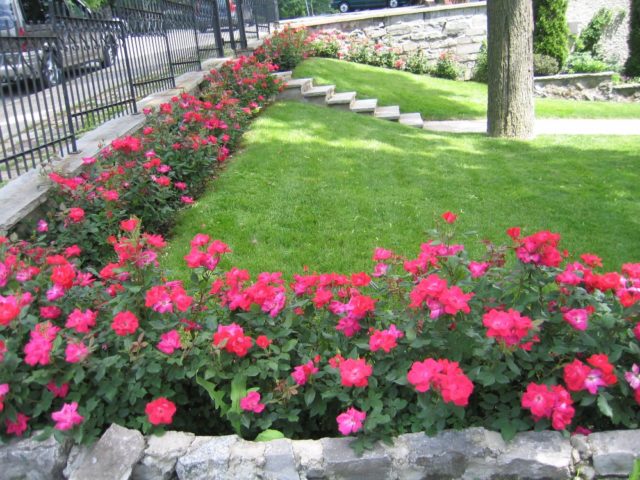
Among the groundcover low-growing Explorer roses, you can choose varieties so that the flowering bushes create the appearance of a border strip
Conclusion
Rose Explorer is a favorite series of flowers among gardeners. Varieties are valued for frost resistance, strong immunity and abundant, long-lasting flowering. For your site, you can choose bush, climbing and low-growing species to create flower arrangements in the garden.
Reviews with photos about the Explorer rose
